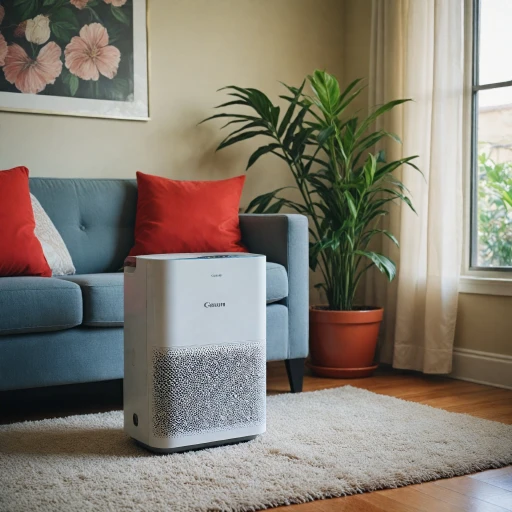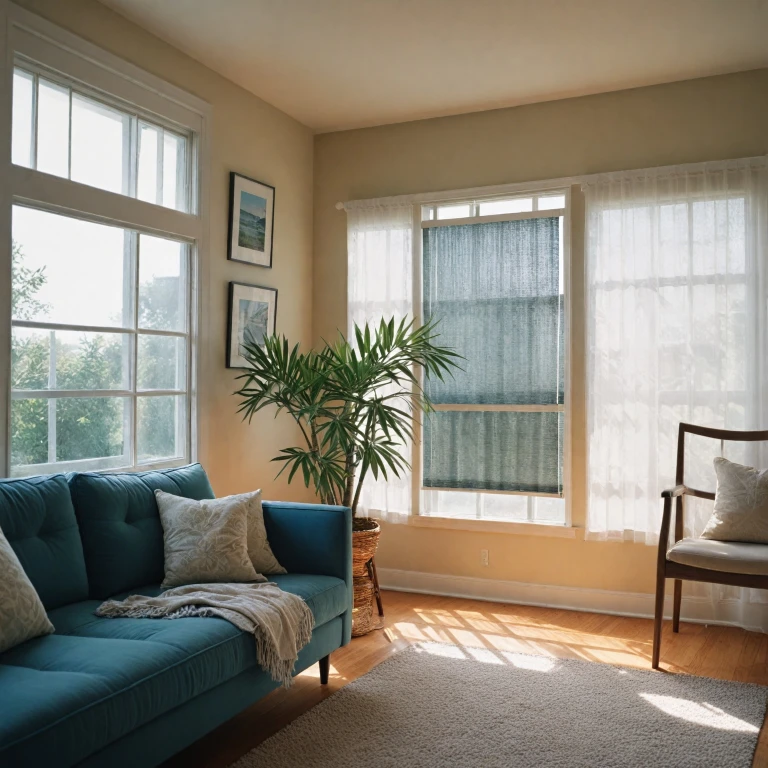What is a Return Grille Air Filter?
Decoding the Return Grille Air Filter
When navigating the landscape of air purification systems, understanding the role of a return grille air filter is paramount. These filters stand as a crucial element in heating, ventilation, and air conditioning (HVAC) systems, ensuring that the air recirculating through your home remains clean and free from harmful particles.
Return grille air filters are specifically designed to be positioned at the return side of your HVAC duct system. This positioning allows them to capture dust, pollen, and other contaminants before they circulate back into the living spaces, enhancing indoor air quality. Unlike standard filters, return grille air filters are often associated with specific dimensions, like the common 20x25x4 size, which are crucial for optimizing the performance of your HVAC system.
For those seeking detailed guidance on operating times for these systems, you might find insights on the
optimal duration for running your air purifier valuable.
Additionally, it's worth considering factors such as the MERV rating when choosing a return grille air filter. These ratings determine the filter's ability to trap particles and improve air quality. Filter grilles can range widely in price and design, with options including hinged, white outer designs, and steel return constructions suitable for different duct openings.
To effectively compare your options, think of them in terms of their impact on air flow and efficiency, while also assessing the aesthetic compatibility with sidewall or ceiling installations. Whatever your specific needs, understanding these key aspects will arm you with the knowledge to make an informed decision as you add to your cart.
The Importance of Indoor Air Quality
Significance of Maintaining Home Air Quality
Indoor air quality isn't just a buzzword; it's crucial for a healthy living environment. With the increasing amount of time people spend indoors, the air quality inside our homes directly impacts our well-being.
- Health Benefits: Good air quality reduces the risk of respiratory illnesses and allergies by filtering out pollutants like dust, pet dander, and pollen. A high-functioning return grille air filter plays a pivotal role by capturing these unwanted particles before they circulate back through your hvac duct system.
- Comfort and Allergens: An efficient filter traps allergens, offering comfort to those with conditions like asthma. The right air filter goes beyond basic filtration, using advanced media air technology to provide a cleaner atmosphere.
- Efficiency in HVAC Systems: Cleaner air translates into less strain on your hvac system. A maintained filter grille ensures smooth air flow, which contributes to energy efficiency and reduces the operating costs.
- Prolongs System Lifespan: Clean filters prevent dust accumulation in the hvac system, safeguarding components like ducts, hinged mechanisms, and motorized elements found in sidewall ceiling installations.
Choosing wisely among diverse options ensures that the filter meets your specific needs, balancing considerations like price, outer dimensions, and filter types. For more insights on maintaining optimal air purifier functionality, an understanding of replacing HEPA filters can be beneficial (
source).
In summary, understanding the significance of indoor air quality influences the type of return grilles chosen, enhancing both your comfort and health at home.
How Return Grille Air Filters Work
Understanding How They Function in Your HVAC System
A return grille air filter acts as a crucial component within your home's HVAC system. It serves a dual function by both filtering the air as it returns to the central system and keeping the system efficient. Located at the return duct opening, this filter captures particles such as dust and pollen before they can circulate back into your living spaces.
Return grille air filters work based on a straightforward yet effective principle. As air returns to the system, it passes through a filter media, often measured by its MERV (Minimum Efficiency Reporting Value) rating. This rating determines the filter's ability to capture various sizes of airborne particles. Generally, a higher MERV rating corresponds to more effective filtration, although you should balance this with your specific home's needs and the existing HVAC unit's capacity.
Choosing the correct size for your filter grille is essential. Filters are typically measured in inches, considering the outer dimensions or duct size. Whether installed in a sidewall, ceiling, or as part of your steel return duct cover, ensuring a snug fit aids in the prevention of unfiltered air bypassing the system. Often, homeowners add cart reminders for the correct size and MERV-rated filters.
Moreover, filter grilles add a protective layer to your HVAC system by preventing heavier particles from entering the ductwork. Grille media varieties can range in designs such as hinged or removable grilles, providing ease during maintenance or replacement tasks.
Additionally, the choice between a media air filter or a simpler filter grille depends on factors like usage, price, and indoor air quality goals. A white outer steel return grille not only complements most interiors but also supports a robust filtration process when paired with high-quality filters. For a more comprehensive understanding of enhancing indoor air quality, explore our resource on
enhancing indoor air quality with air conditioning and purification, which covers significant aspects of using advanced HVAC solutions for cleaner air.
Understanding this integral process not only aids in selecting the right system for your budget but also ensures that you aren't overspending on unnecessary attributes or overlooking critical features for your home's health.
Choosing the Right Return Grille Air Filter
Finding the Perfect Fit for Your Home
Selecting the right return grille air filter involves understanding the unique needs of your home. Here’s a step-by-step guide to help you make an informed decision:
- Determine Your Needs: Begin by assessing the specific requirements of your space. Are you dealing with allergies or a dusty environment? Choosing the right MERV (Minimum Efficiency Reporting Value) rating will be crucial here as it determines the filter's ability to capture particulates.
- Filter Dimensions: Measure the outer dimensions of your existing grille to ensure compatibility. A commonly used size is the 20 x 20 inch, but dimensions vary. Always consider the duct opening and overall unit dimensions to avoid any installation issues.
- Material and Durability: Consider the material used in the filter grilles. While a white outer finish is aesthetically pleasing, a steel return or steel return air filter might offer more durability. Grille media air filters are also an option that combines both functionality and style.
- Type of Grille: You can find filter grilles that are either hinged or removable. A hinged air grille offers easy access for maintenance, whereas a removable grille may be favored for its sleek appearance.
- Budget Consideration: Price is always a determining factor. Evaluate your budget and consider the price sale and unit price of various options. Adding to cart can sometimes give you a view of available discounts or deals.
- Installation Position: Decide where you'll place the grille. Options include sidewall ceiling installations or floor placement. The HVAC duct layout will often determine the best spot.
By considering these factors, you can add the best filter to your home, ensuring optimal air quality. Remember, a properly selected filter not only improves air quality but also enhances the efficiency of your HVAC system.
Maintenance Tips for Optimal Performance
Keeping Your Return Grille Air Filter in Top Shape
Regular maintenance is key to ensuring that your return grille air filter operates at its best. Proper upkeep not only guarantees optimal performance but also extends the lifespan of your filter. Here's how you can achieve this:
- Inspection: Routinely check the condition of your air filter grilles. Look for dust accumulation or any visible damage. Over time, filters may become clogged and less effective at trapping particles.
- Cleaning: Depending on the type of filter grille you have—be it made from white steel outer or any other material—cleaning methods may vary. Removable grille filters, for example, can typically be vacuumed to remove surface debris. Ensure the duct and hvac duct opening areas are also kept free of dust.
- Replacement: Air filters, particularly those with media air components like MERV-rated filters, have a finite lifespan. Refer to the manufacturer’s guidelines for the recommended replacement schedule. Keep an eye on any performance changes such as reduced airflow through the return air duct.
- Check Seals: Verify that the seal between the filter grille and the duct cover is intact. A compromised seal can lead to unfiltered air bypassing the system, reducing the effectiveness of your hvac system.
- Monitor Prices: Stay updated on price sales and discounts to ensure you are getting the best unit price for replacements. Consider bulk purchasing to add to your cart when discounts are available.
Addressing these maintenance tasks can prevent common issues such as poor indoor air quality or increased energy costs. Regular attention to your return grille air filter can ensure your home remains a healthy and pleasant environment.
Common Issues and Troubleshooting
Troubleshooting and Overcoming Common Return Grille Filter Issues
Even with a well-chosen return grille air filter, problems can sometimes arise. Understanding these common issues and knowing how to troubleshoot them will ensure your home’s HVAC system functions smoothly.
- Reduced Airflow: If you notice a decline in airflow, it’s crucial to check if the filter or the return air duct opening is blocked by debris or has become heavily clogged. Accumulated dust on the grille media can restrict the passage of air, making your HVAC system work harder and less efficiently.
- Improper Fit: Filters that are not the correct outer dimensions for the return grilles can lead to inefficient functioning. Always ensure that the filter fits snugly in its place. If you have a hinged grille removable type, make sure the hinges and closure are tightly secured.
- Increased Energy Bills: A neglected or inefficient filter can drive up energy use. Check if the filter’s MERV rating is appropriate for your system’s efficiency needs. A higher MERV rating might offer better filtration but can also reduce airflow, making the system more energy-intensive.
- Unusual Noises: Strange noises from your hvac duct or steel return can indicate obstruction in the duct opening or that the airflow is uneven. Inspect if any part of the steel cover grill or sidewall ceiling attachments has become loose.
- Visible Wear and Tear: Over time, wear on the white outer and corner edges of filter grilles may occur. Regularly view and inspect these parts for any damage, and replace components as necessary to maintain optimal air quality.
For the best outcomes, regular maintenance of your return grille air filters is essential. Practical steps, combined with a vigilant approach to potential issues, can ensure a clean, efficient home environment. For further information, see this in-depth
guide on replacing filters.”

